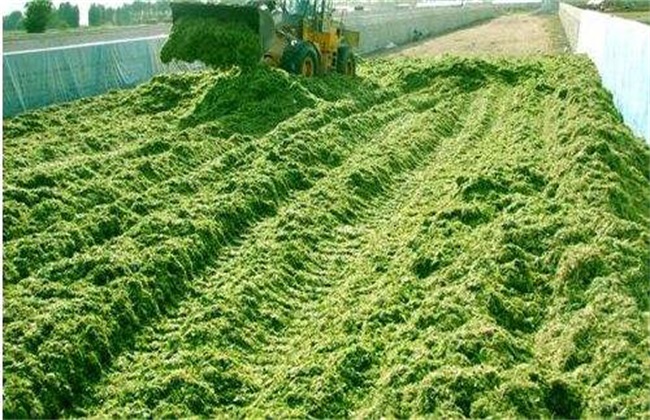Production method of cattle silage
When raising cattle, we all know that we should feed feed such as grass, grain feed, hay, succulent feed and so on. As a matter of fact, silage is also a very suitable feed for raising cattle. This is suitable for the northern areas where crops are used every year, and fresh grass is not fed in autumn and winter, so silage should be made in summer, preserved, and then fed. Well, what is the specific production method of this silage? we should continue to understand it.

1. Production method
Wash the succulent grass or green feed, dry it in the sun, chop it up, add additives and pack it into a bag. Fermentation in a closed and anaerobic environment. During this period, the production of miscellaneous bacteria should be prevented from causing trouble. It can be preserved for a long time after fermentation, which is also a kind of roughage. But it is softer and tastes better, and the cow likes it better. The straw can also be crushed and ammoniated and preserved.
2. Types of silage
There are three kinds of silage, the first is chopped grass, compacted, sealed, lactic acid bacteria reproduction, feed starch is turned into lactic acid, can control not corruption, maintain nutrients. The second is to choose raw materials with less moisture and keep them dry so that they will not ferment and nutrients can be preserved. The third is to add treatment, adding additives to promote fermentation, enzyme preparations, mainly to promote lactic acid reproduction. Or add antimicrobial agents to prevent spoilage bacteria from growing.
3. Common raw materials
The most commonly used for silage are Gramineae leaves, corn green leaves, ryegrass, sorghum leaves; leguminous alfalfa, alfalfa, clover; other pumpkins, sweet potatoes, sweet potatoes, cassava, amaranth, and aquatic plants, some semi-aquatic plants growing in paddy fields. Choose plants with moderate moisture, high sugar content, high carbohydrate content and low protein content. This is easy to produce lactic acid bacteria.
4. Points for attention
Silage should be gradually adapted to cattle and should not be fed too much at first. When taking, we should pay attention to timely sealing to reduce air contact. So as not to create miscellaneous bacteria. At the beginning of silage, there is a lot of carbon dioxide in the environment, so be careful to enter. Silage should not be fed too much, it should be fed reasonably. In the production process, it should be sealed and airtight to avoid decay.
Silage is suitable for animals that need to regurgitate, and cattle feeding is very suitable, but if there is a rule in the area, this method can not be used. Mass production is a bit troublesome, and management should be careful.
Related
- On the eggshell is a badge full of pride. British Poultry Egg Market and Consumer observation
- British study: 72% of Britons are willing to buy native eggs raised by insects
- Guidelines for friendly egg production revised the increase of space in chicken sheds can not be forced to change feathers and lay eggs.
- Risk of delay in customs clearance Australia suspends lobster exports to China
- Pig semen-the Vector of virus Transmission (4)
- Pig semen-the Vector of virus Transmission (3)
- Five common causes of difficult control of classical swine fever in clinic and their countermeasures
- Foot-and-mouth disease is the most effective way to prevent it!
- PED is the number one killer of piglets and has to be guarded against in autumn and winter.
- What is "yellow fat pig"? Have you ever heard the pig collector talk about "yellow fat pig"?



